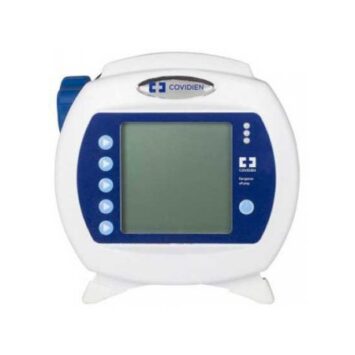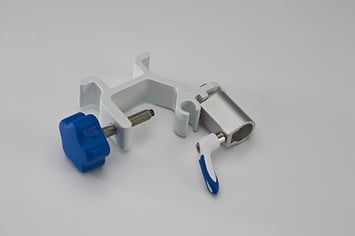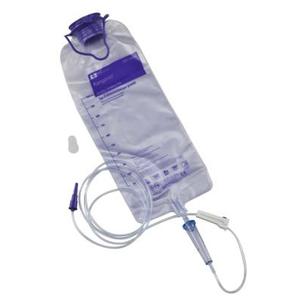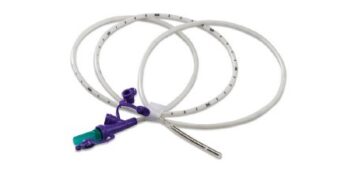G-tube feeding, or gastrostomy tube feeding, is a medical procedure to deliver adequate nutrition to patients who cannot consume enough food. Through the G-tube, nutrients flow directly into the stomach through a surgically implanted tube.
According to Stanford Medicine, G-tube feeding is commonly used for individuals who have:
- Severe difficulty eating or swallowing due to medical conditions such as congenital problems of the mouth, esophagus, stomach, or intestines
- Cerebral palsy
- Ulcerative colitis
- Gastrointestinal cancer
- Bowel obstruction
- Short bowel syndrome
Tube feeding can be challenging for caregivers and patients, but it does not have to be. In this blog post, we will discuss some tips for gastrostomy tube feeding and how our enteral supplies can be helpful.
Tip #1: Use the Right Supplies
The right enteral supplies can make the process of G-tube feeding more comfortable and efficient for both the caregiver and the patient. Our enteral supplies include a wide range of gastrostomy tube feeding products, such as feeding pumps, feeding bags, feeding tubes, and syringes. These enteral supplies are designed to ensure that the patient receives the correct amount of nutrition and that the feeding process is hygienic and safe.
Tip #2: Establish a Feeding Schedule
 Another essential tip for G-tube feeding is to establish a feeding schedule. Feeding schedules are important because they help to ensure that the patient receives the right amount of nutrition at the right time. Our enteral supplies include feeding pumps like the Kangaroo Joey Feeding Pump, which can be programmed to deliver nutrition at specific times, making it easier for caregivers to stick to the feeding schedule.
Another essential tip for G-tube feeding is to establish a feeding schedule. Feeding schedules are important because they help to ensure that the patient receives the right amount of nutrition at the right time. Our enteral supplies include feeding pumps like the Kangaroo Joey Feeding Pump, which can be programmed to deliver nutrition at specific times, making it easier for caregivers to stick to the feeding schedule.
Tip #3: Maintain Proper Hygiene
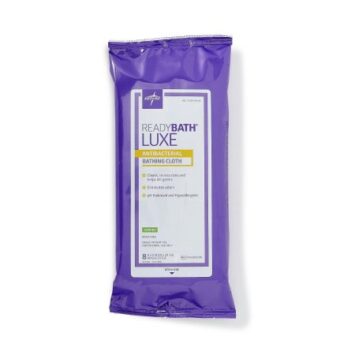 Maintaining daily hygiene is crucial when it comes to tube feeding. The feeding site must be kept dry and clean to prevent skin irritation and infection. Cleaning the tube will help extend usability, and these instructions from Saint Luke’s can help with everything you need to know about caring for your gastronomy tube. Our antibacterial wipes are excellent for cleaning the skin around the G-tube entry site and the tube itself.
Maintaining daily hygiene is crucial when it comes to tube feeding. The feeding site must be kept dry and clean to prevent skin irritation and infection. Cleaning the tube will help extend usability, and these instructions from Saint Luke’s can help with everything you need to know about caring for your gastronomy tube. Our antibacterial wipes are excellent for cleaning the skin around the G-tube entry site and the tube itself.
It is also essential to wash your hands thoroughly before handling any enteral supplies. Our hand sanitizers and no-rinse or rinse-free cleansing products can help reduce the risk of infection.
Tip #4: Monitoring Health when G-Tube Feeding
Monitoring a patient’s health when tube feeding is crucial to ensure the feeding regimen is safe and effective. If the patient is not receiving the right amount of nutrition, it can lead to malnutrition, dehydration, or other complications like diarrhea or abdominal pain, which could be a sign of a blockage or infection. Monitoring a person’s health can also help determine if the feeding schedule needs to be adjusted to ensure the right amount of nutrition is delivered.
Tip #5: Seek Professional Advice
 Finally, it is essential to seek professional advice when tube feeding. Caregivers should consult with a healthcare professional before starting a gastronomy tube feeding regimen. A healthcare professional can help determine the patient’s nutritional needs, provide guidance on feeding schedules, and recommend the right enteral supplies.
Finally, it is essential to seek professional advice when tube feeding. Caregivers should consult with a healthcare professional before starting a gastronomy tube feeding regimen. A healthcare professional can help determine the patient’s nutritional needs, provide guidance on feeding schedules, and recommend the right enteral supplies.
In summary, G-tube feeding can be challenging for caregivers and patients. However, following these tips and using our enteral supplies can make the process easier, safer, and more efficient. Use the right supplies, establish a feeding schedule, maintain proper hygiene, monitor the patient’s health, and seek professional advice.
Please note that these tips are only our suggestions and should not be used in place of what your healthcare professional recommends or prescribes.
Popular G-Tube Feeding Supplies
Disclaimer: Important Notice Regarding Medical Advice
The information provided in this blog is intended for general informational purposes only and should not be considered a substitute for professional medical advice, diagnosis, or treatment.

